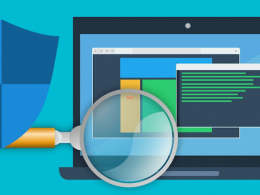A recent research highlights a concerning trend: hackers targeting macOS users with malicious advertisements, and can say Malvertising. This tactic leverages fake websites designed to mimic legitimate software download platforms, ultimately tricking unsuspecting users into downloading malware.
This analysis delves deeper into the technical aspects of this scheme and explores its potential ramifications.
Understanding the Malware Threat
The research mentions malware capable of stealing sensitive data, including passwords, cryptocurrency wallet information, and more. This type of malware likely employs keylogging techniques to capture keystrokes as users enter their credentials on fraudulent websites. In the case of cryptocurrency wallets, malware might attempt to steal private keys or exploit vulnerabilities in wallet software to gain unauthorized access to funds.
Why Target macOS Users?
According to research suggests that hackers might specifically target individuals within the cryptocurrency industry due to the potentially higher value of information they possess. Cryptocurrency wallets often hold significant financial assets, making them prime targets for cybercriminals.
However, it’s crucial to recognize that macOS users in general are increasingly becoming attractive targets. The platform’s reputation for security has historically made it a less-favored target compared to Windows. However, this perception has shifted in recent years as macOS’s popularity has grown. Cybercriminals are constantly seeking new opportunities, and macOS users now represent a potentially lucrative target base.
Atomic Stealer spread through sponsored Ads
Report by JAMF security researchers
While searching for “Arc Browser” on Google, it was brought to our attention that following the sponsored result for what seems to be the legitimate Arc web browser, actually brings you to a malicious site aricl[.]net that imitates the legitimate arc.net.
Protecting Yourself from Malicious Ads
Here are some essential steps macOS users can take to safeguard themselves against such attacks:
- Be Wary of Unfamiliar Download Sources: Only download software from trusted vendors and official app stores. Avoid clicking on download links from suspicious websites or emails.
- Enable Pop-Up Blocking: Most web browsers offer built-in pop-up blockers. Utilize these features to minimize the risk of encountering malicious advertisements.
- Employ Ad-Blocking Extensions: Consider installing reputable ad-blocking extensions for your web browser. These extensions can significantly reduce the number of advertisements you encounter, thereby lowering the exposure to potential threats.
- Maintain Software Updates: Regularly update your macOS operating system, web browser, and other software applications. These updates often contain security patches that address newly discovered vulnerabilities.
- Implement Security Software: A robust security software suite can provide an additional layer of protection by detecting and blocking malware attempts.
By following these recommendations, macOS users can significantly reduce their risk of falling victim to malicious advertising campaigns.
Last year, macOS Malware AMOS Found– Steal Keychain Passwords, it was fixed later.
Analysis
Malicious ads targeting macOS users are on the rise. They appear on fake websites and trick users into downloading malware that can steal sensitive data. This is due to the misconception that macOS is highly secure. By being cautious when downloading, enabling browser security features, and keeping software up-to-date, macOS users can reduce the risk of being victimized.
Today, it is not only Windows that is susceptible to malvertising – Mac users are also at risk.











